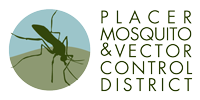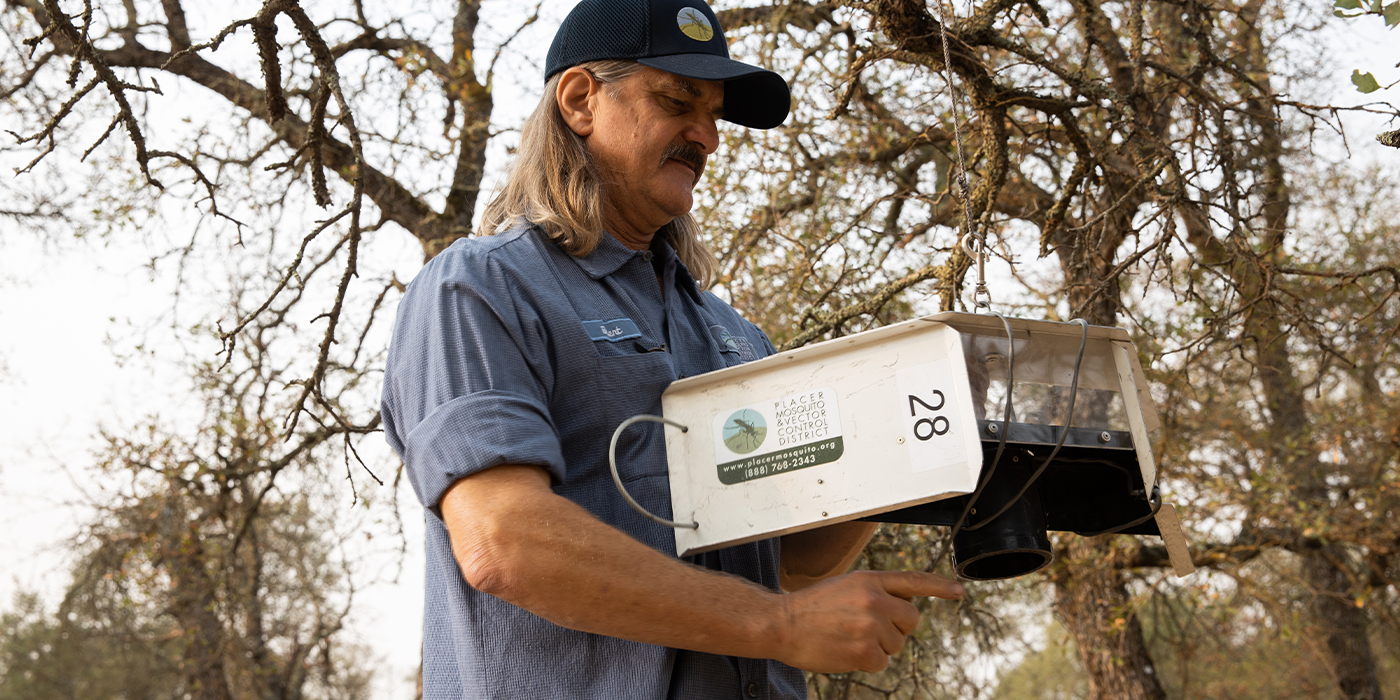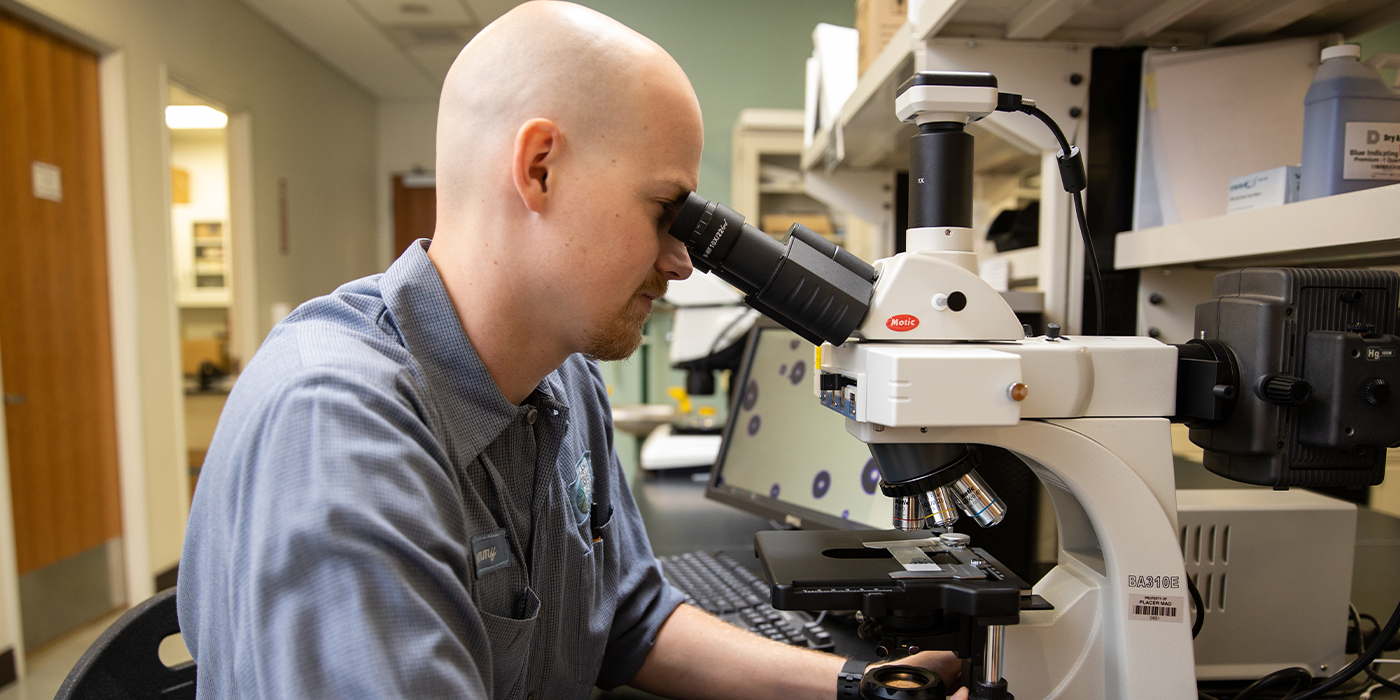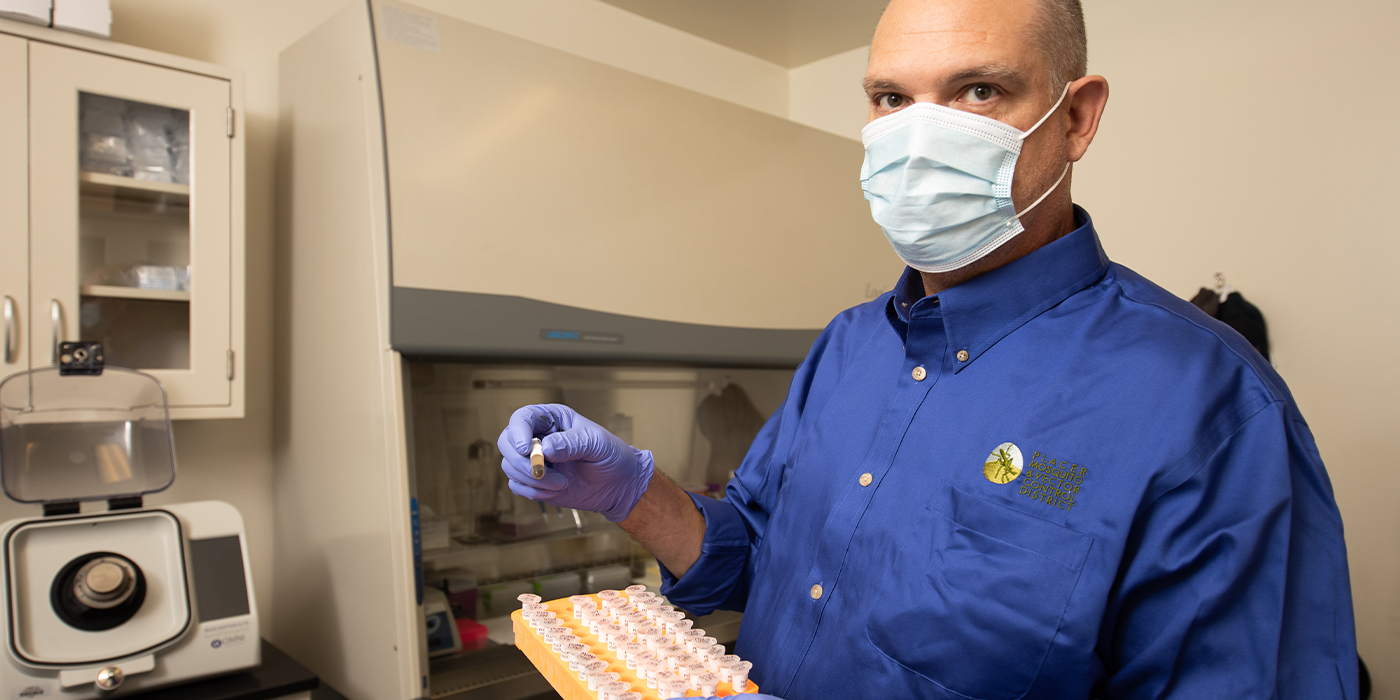Routine vector and disease surveillance are essential components of a comprehensive mosquito and vector control program. Surveillance means that we trap adult mosquitoes, ticks and yellowjackets on a regular basis in multiple locations to understand their population growth during the season and from year to year. Surveillance also means that we test mosquitoes and ticks from our traps to track diseases they may carry. Human cases of vector-borne diseases like West Nile virus are tracked by our partner agencies Placer County Health and Human Services and the California Department of Public Health.
Our vector and disease surveillance program is robust and monitors the abundance of:
- Mosquitoes
- Ticks
- Yellowjackets
- Presence of West Nile virus and other vector-borne diseases
Trapping and testing methods are different for each vector and disease, but we always use the results to assess the risk to people, inform the public and make preventative or responsive vector control treatments in the most safe, timely and effective way possible.
West Nile Virus Surveillance
Mosquitoes are trapped and collected in diverse locations throughout the county and brought back to our lab where testing is done. When traps return to the lab, female mosquitoes are pooled together by species. Each sample pool contains between one and 50 mosquitoes. The samples are tested for West Nile virus, St. Louis Encephalitis virus and Western Equine Encephalitis virus.
Dead Birds
We also test dead birds reported to the California Dead Bird hotline. Dead birds can be an early sign that West Nile virus activity is increasing in a particular area. By collecting and testing dead birds, we can use the location of WNV positive birds to conduct additional surveillance or plan mosquito control operations.
Mosquito Surveillance
Mosquito surveillance includes identifying mosquito development sources, inspecting and collecting mosquito larvae and monitoring adult mosquito populations and disease activity over time across the District’ service area. We collect and analyze this surveillance data and use it to monitor distribution patterns of the different mosquito species throughout the county, determine risk periods of public exposure to mosquito-borne diseases and plan and evaluate mosquito control activities.
Tick Surveillance
During peak tick season, October-April, our staff collects ticks at designated tick surveillance sites in the foothills. We identify the different species of ticks found and test for tick-borne diseases like Lyme disease. This information helps us identify and communicate tick-borne disease risk to the public.
Yellowjacket Surveillance
Yellowjackets can be a significant hazard in eastern Placer County although numbers of yellowjackets can vary dramatically from year to year. To help us predict yellowjacket abundance and nuisance, we set and pick up weekly yellowjacket traps in eastern Placer County during summer. We also use traps to help identify nest locations and test new bait materials that may lead to new and better control options for yellowjackets.










